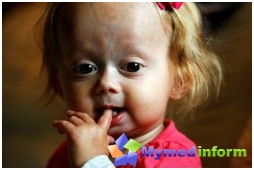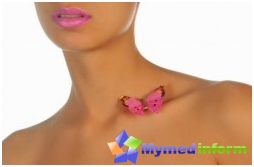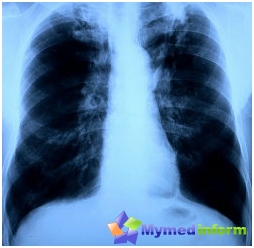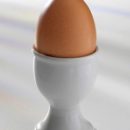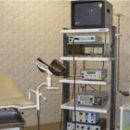The heart is one of the most important human bodies. Daily it pumped over 8,000 liters of blood and makes about 100.000 abbreviations. In addition, the heart is sensitive to all internal and external changes occurring with man. No wonder that with such a situation, it is very easy to disrupt the work of this important organ.
Arrhythmia and her symptoms
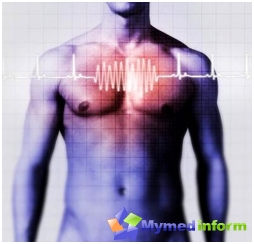
Heart arrhythmia is a rhythm disorder, frequency or heart cut sequence. Usually a person in calm condition feels only weak heartbeats, but does not feel his rhythm. When arrhythmia, a person feels obvious interruptions in his work. It can be sharp fading, early, or chaotic abbreviations. The disease may appear as a result of previous heart diseases, after infectious processes, violation of hormone Background or due to congenital defects. Our site warns that even a healthy person cannot be insured from arrhythmia. So the disease may not only be a consequence of health problems, but also appear as a result of emotional, mental or stress loads. And they may experience any person and in large quantities throughout his life. Arrhythmia is also a satellite of people with diseases of the central nervous system.
The main symptoms of arrhythmia include:
- weakness, fatigue and dizziness;
- Pain and pressure in the chest;
- the appearance of the breath or frequent breathing;
- fainting and loss of consciousness.
Types and causes of arrhythmias
Depending on heart rate disorders, you can select several types of arrhythmias.
Tachycardia Call an increase in the frequency of heartbeat more than 90 shots per minute. Tachycardia has many varieties. The main of them are:
- Physiological (sinus) tachycardia - heartbeat up to 120-200 beats per minute, which basically occurs in the form of attacks. It may appear in healthy people and arises as a consequence of physical or emotional loads. After their termination, the heart rate comes back. The disease may also be due to both heart diseases as a heart disease, heart failure and T.D.;
- Pathological (paroxysmal) tachycardia arises like a sharp increase in heartbeat to 130-200 beats per minute. Usually the attack ends as sharply, as it starts. The duration of such an attack can continue from a few minutes to several days. Such attacks mainly arise in people with heart diseases, central nervous system, etc.
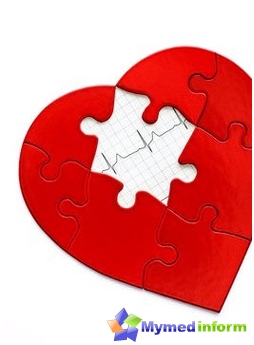
Bradycardia - This is a slowdown of an adult human pulse less than 60 shots per minute. Such a heart rhythm is dangerous in that the weak level of blood circulation of all internal organs negatively affects the work of the whole organism. The main signs of bradycardia are the feeling of weakness, increased fatigue, pain in the heart, dizziness and even the full loss of consciousness. Bradycardia may occur with neurosis, endocrine diseases, elevated level of potassium in the blood, with the pathology of the digestive organs and T.D.
Extrasystole - This is a violation of cardiac activity, which is to prematurely reduce the whole heart or its individual parts. The main symptoms are «Forming heart», Weakness and dizziness. This type of cardiac arrhythmia is the most common among the rest. Extrasystolia may occur not only as a result of heart disease, but also as a result of the improper functioning of other organs. These may be disorders in the gastrointestinal tract, the urogenital system and T.D. A frequent cause may be the emergence of extrasystole can be the effects of tobacco, caffeine, alcohol, as well as stressful situations.
At Clear arrhythmia There is a chaotic reduction of atria. As a result of such work, the heart extremely eradicates blood, which leads to a violation of all blood circulation. Cleaning arrhythmia is manifested as a sense of uneven heartfrections. As a result of weak blood circulation, the sword may appear, fast fatigue and T.D. Sometimes a patient may not even feel it, and detection occurs only in prophylactic inspection. Frequent causes of flickering arrhythmia are congenital heart defects, low blood potassium levels, heartless insufficient or hypertensive disease. The reason may even be the incorrect functioning of the thyroid gland.
In 1992, Bush Sr. during dinner, the premiere of Japan lost consciousness and fell under the table precisely because of the problems with the heart. Subsequently, American cardiologists have discovered his high level of thyroid hormones, which has become one of the reasons for fainting.
Diagnosis of arrhythmia
Cardiogram
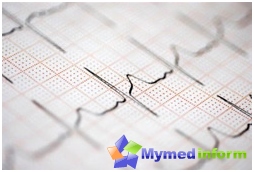
The most common way to diagnose arrhythmia is all familiar electrocardiograph. Many this device will be remembered thanks to a large number of cold sucker sensors that attach to the patient's body. This device builds a cardiogram - a graphic representation of electrical pulses, which make the heart are forced. Further on the cardiogram, the doctor establishes the diagnosis of the person being examined.
The electrocardiogram is assigned almost in all cases during suspected or complaints of improper heart performance, since this diagnostic method allows you to collect a lot of information in a short period to set a diagnosis or destination further research.
Halter monitoring
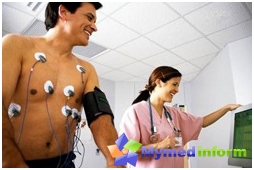
In essence, this type of diagnosis is the development of the previous. But in this case, the daily observation of the heart. To do this, the patient strengthens all the same sensors connected to a small recorder, which constantly records the electrocardiogram of the heart. Next, a special program identifies deviations in the heart rhythm, which allows you to make a reasonably diagnosed.
Halter monitoring is usually prescribed in cases where a patient has very frequent deterioration of well-being, but they cannot identify them in the clinical period. This diagnostic method can help people suddenly losing consciousness, since the heart rate disorder can be just one of the reasons. Hmm is also appointed to people who recently suffered a myocardial infarction, to identify and predict dangerous human disorders in the work of the heart. In addition, hmm can be appointed in the form of prophylactic observation of the patient or to assess the quality of the treatment.
Electrophysiological research

At this type of research, the electrical potentials are recorded directly from the inner surface of the heart. Special sensors are introduced into the patient through veins in the heart, which register electrical potentials directly from cardiac cameras.
Electrophysiological research is appointed in cases where conventional research methods do not allow an accurate diagnosis or to collect additional information in case of complex heart disease.
Treatment of arrhythmia
First of all, our site must say that the appearance of arrhythmia can be a symptom of other diseases, not only cardiovascular. Therefore, when the first symptoms appear, it is recommended to immediately seek advice from a doctor.
Tagcardia treatment
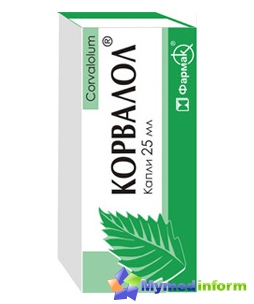
Very often tachycardia does not require any treatment at all. The patient is recommended to rest as much as possible and abandon the bad habits, somewhere except smoking and alcohol and coffee, strong tea, Cola-Cola, chocolate and other charms of sweet life. From publicly available drugs can be recommended tincture of Valerians or Corvalol. But sometimes medication treatment may be necessary, which only the doctor has the right to appoint. The patient can be spelled out by drugs such as lidocaine, verapamil, rhythmilene, propranolol, etmsin or digoxin.
Folk ways can be tried as treatment. To do this, it is necessary to prepare a mixture consisting of one liter of lemon juice and a mineral water half-liter. Take it you need one glass 3 times a day after eating. Magnesium can also help treatment. In addition to vitamins, it can be obtained from such products like peanuts, white beans, rice and cocoa powder.
Bradycardia
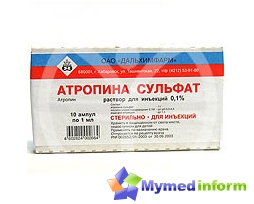
In the treatment of bradycardia, many factors are taken into account. If the degree of severity of the disease is small, in such cases and treatment is not required. In addition, bradycardia may be observed against the background of pathologies in the work of the heart muscle (myocardium), with the appropriate treatment of which the symptoms of bradycardia disappear.
With a decrease in the frequency of heart cuts up to 50 shots and below (which is a serious threat to human life) drug treatment is required. For the treatment of bradycardia, drugs are prescribed such as Atropine, Alupent, Atenolol or Eufillin. In no case is it not recommended to use these funds yourself. These drugs themselves are able to entail the appearance of arrhythmias, and therefore should be accepted only on the prescription and under the control of the doctor.
In severe cases, the patient produces an implantation of an electrocardiotimulator. The main task of the device consists in increasing the number of heart reductions to their normal value. The increase in heartbeat occurs due to electronic pulses sent by the pacemaker. The instrument itself is implanted under a large breast muscle, and the electrodes connected to it are installed inside the heart cameras. The mode of operation of the pacemaker are installed using a special programmer.
Extrasystole
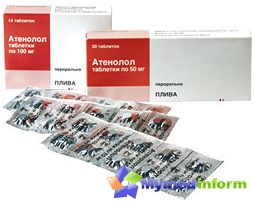
Depending on the case, the treatment of extrasystole may be different. In the case of diseases of the nervous system, the patient is prescribed soothing drugs or recommend to seek help to a psychotherapist. If the cause of the disease is Diseases other organs, then attention should be paid to them. Patients suffering from extrasystole, it is not recommended to use alcohol, cigarettes, strong tea and coffee. Preparations such as beta-adrenoblays (propranolol, pindolol, oxporalolol, metoprolol, atensalol, talinolol), as well as in combination with them or as separate preparations - amiodarone and sotalol. The choice of an antiarrhythmic drug is quite complicated, so the effectiveness of treatment is often controlled using Halter monitoring. If the patient's well-being does not improve, the treatment method changes to another.
Cleaning arrhythmia
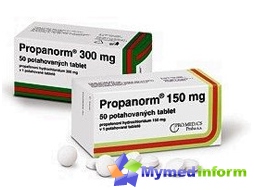
For recovery of cardiac rhythm, various antiarrhythmic drugs are used in various combinations (amiodar, quinidine, dyspeyramide, allypinin, conpaphenon, etcizin, sotalol, etc.), preparations are selected in each individual case by the attending physician.
If the medicinal methods do not give proper effect, electric cardier can be applied. The purpose of this procedure is to restore normal heart rhythm with the help of special electrical discharges delivered to the heart.
There is an outdoor and inner type of cardioversion. When conducting an outer cardioversion on the patient's chest, electrodes are installed, for which electrical impulses are supplied. With internal cardioversion, pulses are already fed directly to the heart with the help of electrodes that are summary through veins. So that the patient does not have discomfort cardiovysia are usually produced under anesthesia. The procedure is quite effective and normal heartbeat is returned to 9 of 10 patients. However, statistics show that after a year the disease is again manifested by half of the recovered patients.
In some severe cases, surgical intervention is applied. As a rule, the decision on the need for an operation is taken only in the presence of other serious violations in the work of the heart.
Prevention of the disease
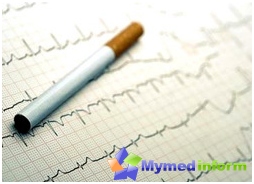
The development of arrhythmias, and other heart diseases, directly depends on the lifestyle of a person.
In order not to catch this disease, smoking people will have to think very thoroughly to throw this bad habit. According to statistics, the development of heart diseases in smokers 2-6 times more than non-smoking.
A constant active lifestyle will not only reduce the risk of heart disease, but also will strengthen the body as a whole. Exercise, do exercise and try to move as much as possible, especially at low-modular work. Long walks in fresh air will also benefit.
Carefully treat food. If the cup of coffee in the morning and the sandwich for lunch is your day diet, it must be changed in the shortest possible time. Increase the consumption of fruits and vegetables, while fat and fried food is better to refuse. The use of coffee and alcohol in large quantities also does not contribute to good heart.
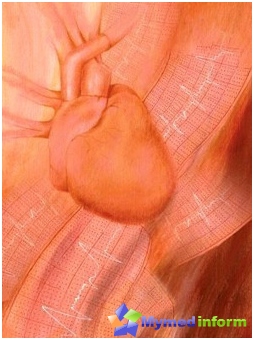
Practically in most types of arrhythmia causes the disease Nervous disorder Systems. Permanent stress, quarrels and depression may undermine human health and cause heart disease. In such a situation, it is difficult to give any advice, but the main thing is to remember that health is one of the most important things that has a person. Special risk group are children of school age, especially girls. Untreated love can lead to night insomnia, constant irritability and depression. As a result, cardiac arrhythmia can develop in a very short period of time. To this not happen, our site recommends that parents are extremely careful about children in this difficult period for them.
In medical practice there was a case when the young man had a degradation of relationships with his beloved, and therefore, almost after every quarrel he had to contact a doctor. However, when the relationship has been established, health again restored. After another reception, the doctor had to write a joking certificate to his girlfriend that the patient's quarrels are categorically contraindicated.



